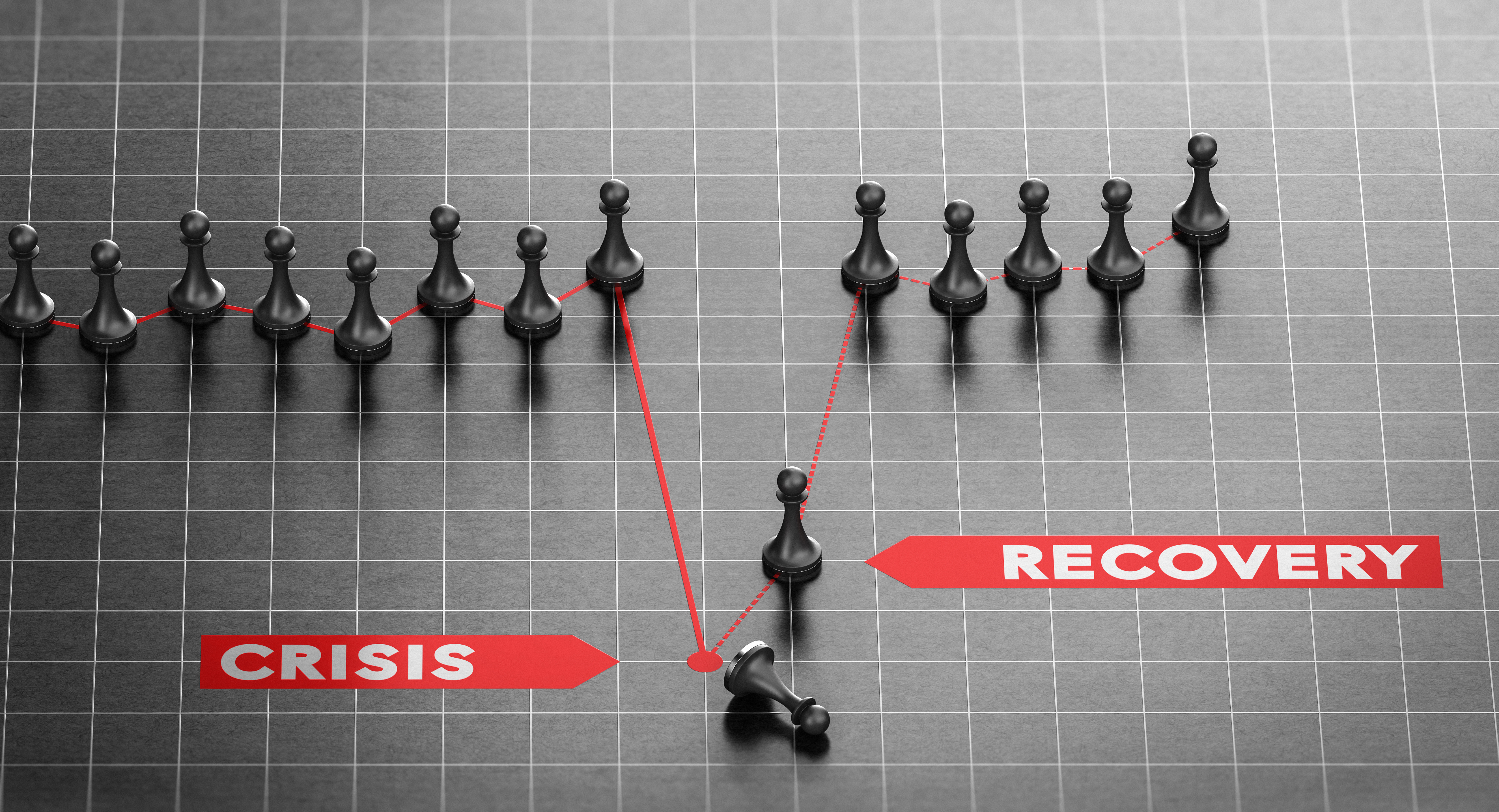Crisis Response Phase Three: Sharing your story when the coronavirus crisis is over

It may be hard to imagine now, but some day the hashtags #COVID-19 and #coronavirus will describe a time in our past, rather than the unstable present.
Recovery from the pandemic is not only a medical and global macroeconomic issue; it’s a personal concern for you and everyone in your organization.
Before this life-altering tragedy struck, you and your organization had a purpose, a mission, or as we call it, a Capital S Story to share – a story that answers the questions of why someone would buy from you, work for you, invest in you, partner with you or donate to you. Sharing that story now is very difficult.
When can you get back to sharing your Capital S Story with this crisis dominating our everyday existence? The answer varies from industry to industry and from organization to organization. While the timing might vary, our experience as crisis communicators has taught us that your ability to share your Capital S Story and return to normal depends upon successfully navigating the three phases of crisis communication:
- Phase 1 – Stop the bleeding: This is the most immediate phase. Depending on the crisis, this phase can last from 24 hours to two months. Many of us are still grappling with this shock or immediate response phase of the coronavirus crisis. We’ve described how to communicate during this phase in this blog post.
- Phase 2 – Win hearts and minds: After the immediate, intense phase of a crisis, there’s a need to reclaim the trust of your stakeholder audiences. Depending upon what your organization does, this could range from assuring diners that your food is safe to explaining how your nursing home safely treated infections and minimized the spread. Typically, this second phase of crisis communications lasts about three months. We described Phase 2 crisis communications in this blog post.
- Phase 3 – Restore reputation: This is the focus of this blog post. Restoring reputation is, in our experience, the longest phase of crisis communications. Restoring your reputation can take years, depending upon the specifics of the crisis. For example, the BP oil spill happened 10 years ago; the oil giant is still spending money and communicating in Gulf communities to restore its reputation there.
One of the lessons we’ve learned in working with many crisis clients over the years is that it’s a mistake to ignore any phase of crisis communications before, during or after what seems to be the “actual” crisis.
In other words, if you’ve been prudent, you’ve planned for a crisis (and your crisis communications) before it hits you, you are proactive and strategic in your communications during the crisis, and you never forget that someday this will end and you can get back to “normal” communications and marketing.
For your organization, it’s probably far too soon to be engaging in Phase 3 crisis communications for the coronavirus. I guarantee you, it’s not too early to be thinking about it. So here are 10 questions to get you prepared for what comes after this crisis:
TEN QUESTIONS FOR SUCCESSFUL POST-CORONAVIRUS COMMUNICATIONS:
- What can you do now to plan for the end of this crisis?
This is the biggest crisis in our lifetimes. It’s hard to put aside time to do this and yet it’s essential. My own computer monitor has sticky notes on it with ideas – your process doesn’t need to be any more elegant; you just need to remember that this crisis will end, and you want to be able to communicate that. - What has this crisis taught you about changes to your communications post-crisis?
Many of our clients are discovering from this crisis that their previous means of communicating with important stakeholders, whether it be employees, customers or vendors, is sadly lacking. A client recently said to me that this crisis had not only shined a light on its previous poor marketing communications, but it had also put a floodlight on the lack of good communications. Whatever you learn from the immense stress that this global crisis is putting on your organization, don’t forget it when this is over! Make sure to turn this difficult moment in your organization’s history to your benefit. Whatever weak links the coronavirus exploited in your communications, fix them for the future – don’t go back to your old ways. - What have you learned about your stakeholders from this crisis that will affect how you communicate with them?
Our clients are also sharing with us that the heat of this enormous crisis is creating the opportunity for much deeper, more transparent conversations with employees, customers, partners, etc. When your important audiences are opening their hearts and minds to you – remember what they share with you and incorporate those key learnings into your post-crisis communications with them. - What new resources will you add to your communications post-crisis?
Beyond video conferencing platforms like Zoom, what have you learned about the best ways to reach your most important audiences when it mattered most? No doubt virtual events and changes to business travel are among the big categories of change for us all in terms of post-crisis communication, but what else? Texting? More effective and strategic use of social media? What about virtual communities and instant messaging platforms like Slack? Many of these resources are free or nearly free, yet it’s not as much about cost as it is rethinking the best means to engage your audiences. - What will you drop from your communications post-crisis?
This is a direct follow-on to #3. It’s not just changing, it’s about getting rid of things. For some organizations, it might mean rethinking the event strategy. For others, it might mean finally dropping old-school tools that take time and don’t produce measurable engagement. Postal mail comes to mind. On the other hand, for some organizations, moving some communications to U.S. mail might make sense given social distancing key learnings. It’s not as important what you drop as it is that you use the crucible of this crisis to be honest with yourself about the best means of engaging your audiences. - How will you know you’re ready to start restoring your reputation?
Only you know the best timeline for shifting your communications to post-crisis storytelling. Our recommendation is that you pick a date and drive toward it, much the same way if you were planning a road trip, you’d at least have a map app or other means of knowing where you’re going and when. Certainly, your date may change given circumstances, but without one, how will you know when to begin and how can you effectively plan for that? - How will you communicate that you’ve returned to business as usual?
Here’s a prediction: Just as we’re all tired of having companies that we seldom patronize email us about their “COVID-19 plans,” in a few months, we’re all going to be exhausted by a big rush of “me too” post-coronavirus re-openings of businesses.
Give it some thought so that your organization stands out. We don't know how long the economic recovery from this crisis will take; we do know that human nature is predictable. Don’t be predictable. Start thinking now about creative ideas for announcing “We’re back!”
A few examples might include: celebrating the employees or customers who made it possible for your organization to survive the crisis or sharing the best stories of kindness, endurance, charity, etc. that your organization experienced during the crisis. Begin to think now about how your organization can stand apart. - How will you demonstrate changed behavior?
Unfortunately, too many skeptical audiences see communications and marketing as merely “talk.” So how will your organization “walk the talk,” and demonstrate what you learned from this crisis? Depending upon your industry, the answers will be different. Coming out of a crisis, research shows that nonverbal communication (actions) are far more important than words. Start on your list of changed behaviors now and be ready to live them. - How will you show that you have learned from the crisis?
Thus far, I’ve talked only about organizational changes because of the coronavirus crisis. Yet, this is also a very personal event and one very important way of making a human connection coming out of this crisis will be the personal actions that you as a leader will take. What personal and relatable stories can you share about surviving the crisis? What lessons did you learn that humanize your organization and you as a leader to employees, customers and other stakeholders? Start thinking about that now, not when this is all over. - How will you employ your Capital S Story to build for the future?
Finally, if I’m going to be true to my own story and that of WordWrite, I have to bring it back to what we consider the most important marketing asset any organization has – its Capital S Story. In the stress of this terrible crisis, it’s easy to push that aside and forget it. Please don’t. In fact, among our clients, those who are doing best in terms of cultural health are leaning into their Capital S Story hard, even in the first phase of the crisis. It should be no different for you, especially when we all can start to think about making COVID-19 a part of our past.
What are your thoughts on post-coronavirus communications? Please share in the comments!
